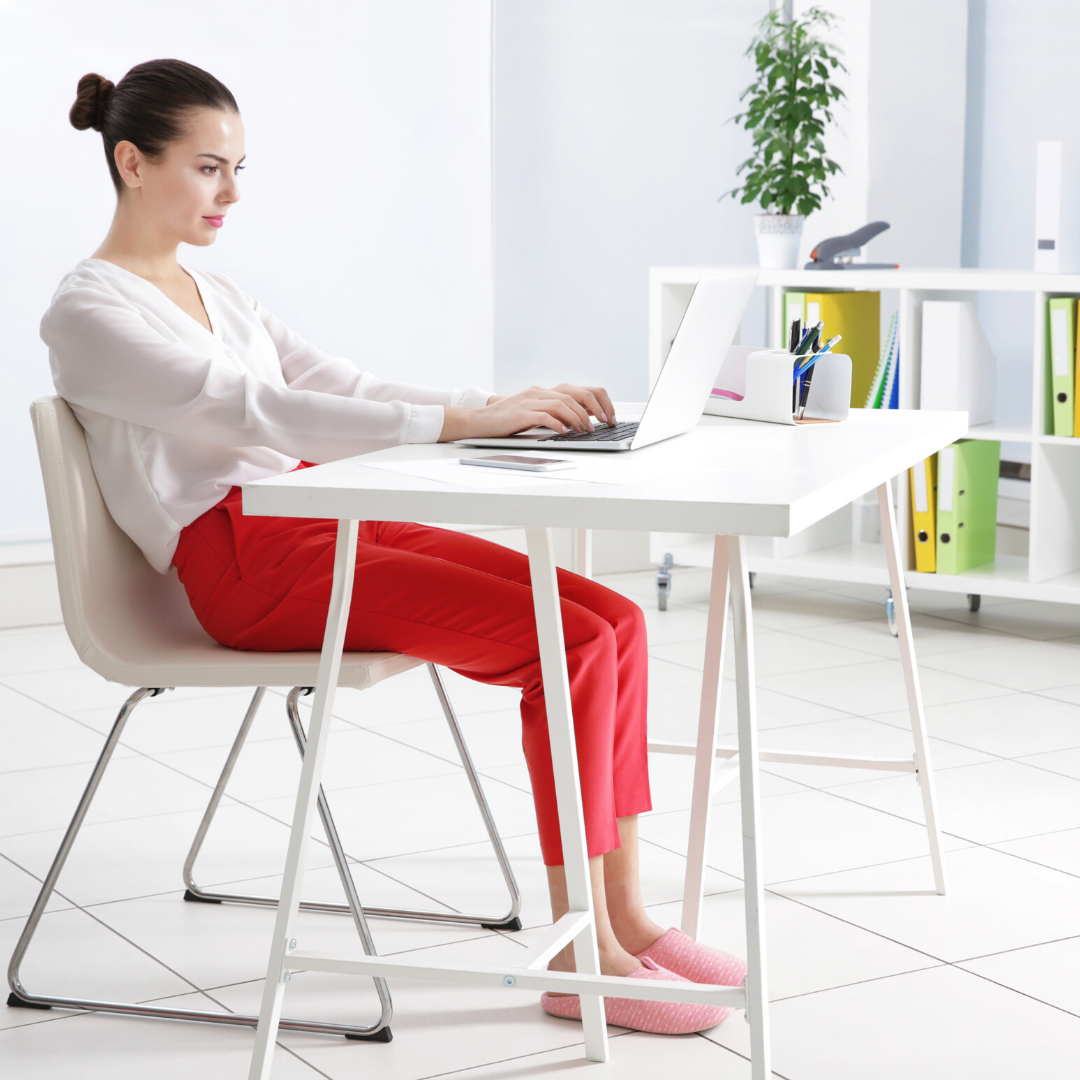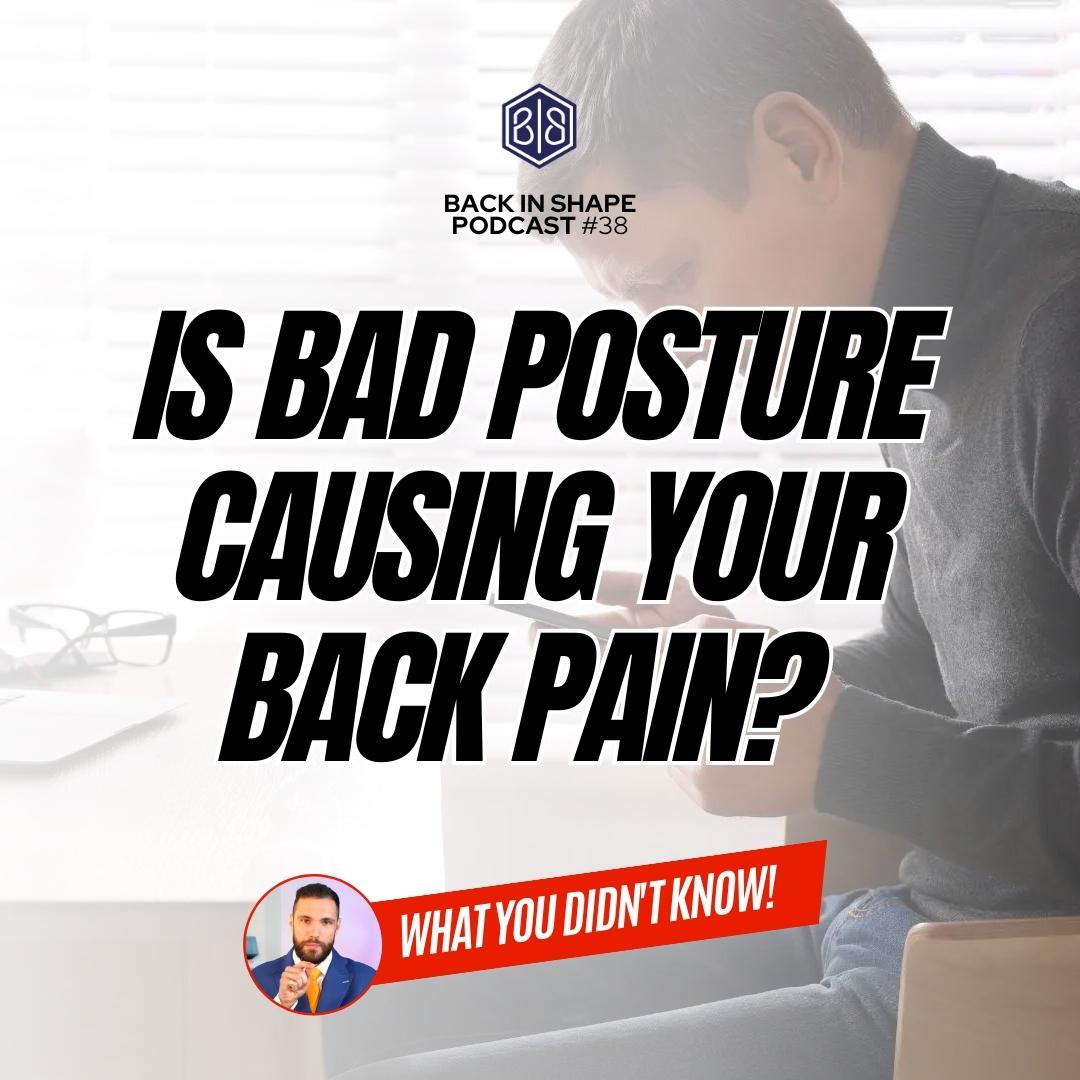One of the most common questions we get here at the clinic, is patients asking why their bad posture is so comfortable? The answer to this question is relatively simple, and correcting your posture can require some real determination and persistence – but like everything worth doing, it is worth the extra time and energy to correct.
How Does Your Posture Change?
So why is bad posture comfortable? Your posture is a direct reflection of how you use your body on a daily basis. Let’s say you have a desk job, perhaps you travel in the morning on the tube with your head buried in your phone, you sit at a desk all day leaning forwards on the desk, then maybe when you commute home and for the rest of the evening you have your head leaning forwards on your phone or propped up on the sofa to watch TV. Being unaware of your posture can cause your body to start adapting. The muscles and ligaments stretch and lengthen to help you sit in that position. In the long term, this type of posture puts more strain on the joints in your neck which can start to compress against the discs and degenerate. This can cause symptoms such as upper back and neck pain, frequent headaches and tense muscles in your upper body.
How Habits Affect Posture
The habits you develop can reflect in your posture and adapt to the way that you hold yourself on a daily basis. Whether that’s leaning to one side, sitting with one leg under your bottom, leaning forwards with your shoulders rounded or slouching backwards, your natural posture adapts and it becomes even more comfortable for your body to be sat in that position. A test we often ask our patients to do, is to take a look around in their office and try to mimic the posture of the person sat next to you. Ask them how comfortable they are, and see how comfortable you are in their position. If you do, you’ll probably wonder how they can be sat in that posture all day – but it’s simply because you use your posture in a certain way on a daily basis.

How To Make Good Posture Comfortable
Just as it’s that simple for bad posture to become comfortable, it’s also as simple to correct. At first, it may take quite a few check-ins with your posture on a daily basis to make sure you maintain the posture. Make sure you’re sitting with your feet square on the floor, with your head square to your shoulders – neither looking up nor down at your computer screen but in a neutral position. During your commutes if you’re prone to pulling out your phone and staring down at it on a daily basis, try to not do this. Whether that’s through putting on a podcast or audiobook while you travel, or purchasing a simple device that fits to the back of your phone case, called a ‘pop-socket’ to help you hold your phone directly in front of your face.
Being aware of your posture means sitting up straight, getting your muscles engaged and getting your spine to work in a different way to how it has been used. Weight bearing in a more normal, efficient manner can take a bit of trial and error at first for your muscles to adapt around it, and while poor posture may be more comfortable for you – it wasn’t always. At some point you started to slip, and your body started to make those adaptations, which can make the ligaments and muscles function differently when you’re in a seated posture. If done regularly, this posture you adapt while sitting can carry across to when you’re standing too, and you may find your neck has a more forward posture as a result. The good news is, great posture can also be comfortable, it just takes a little bit of work and effort in the first place to get a beneficial outcome.
Becoming More Aware Of Your Posture
Taking the time and being aware of your posture on a more regular basis can help change your habits into good ones, that lead your spine to be much healthier in the long term. Strengthening up some of the back muscles will help you to be able to sit with good posture for much longer. You can do this by doing seated rows at the gym and middle back activation exercises that will strengthen your upper back muscles. Practicing exercises that train your core will also enable you to be able to hold good posture for longer as well. It’s common to get some initial discomfort when changing your posture back to a more ideal one – this is because the muscles will have weakened so will need to strengthen back up as they start to be used more frequently. They’ll get better, you’ll get stronger and the effort it takes to maintain good posture will be more effortless. This really helps if you do have back pain, and helps avoid getting back pain in the future if you have good day-to-day sitting and standing posture.
If you’re struggling with back or neck pain, or perhaps you think you have a misalignment but are struggling to fix the problem, contact us today to see how we can help you. Based in Central London, The Mayfair Clinic is a back and neck pain specialist using a combination advanced technologies and rehabilitation to get you back on track. Call us today on 0203 947 3222 or email us at info@themayfairclinic.com to see how we can help or speak with a member of the team to book in your first appointment. Your initial visit with us includes an examination, X-rays if necessary and a treatment.
Contact Us.
Email Us
info@themayfairclinic.com
Call Us
0203 947 32 22
Clinic Address
4 Cavendish Square, London, W1g 0PG.
